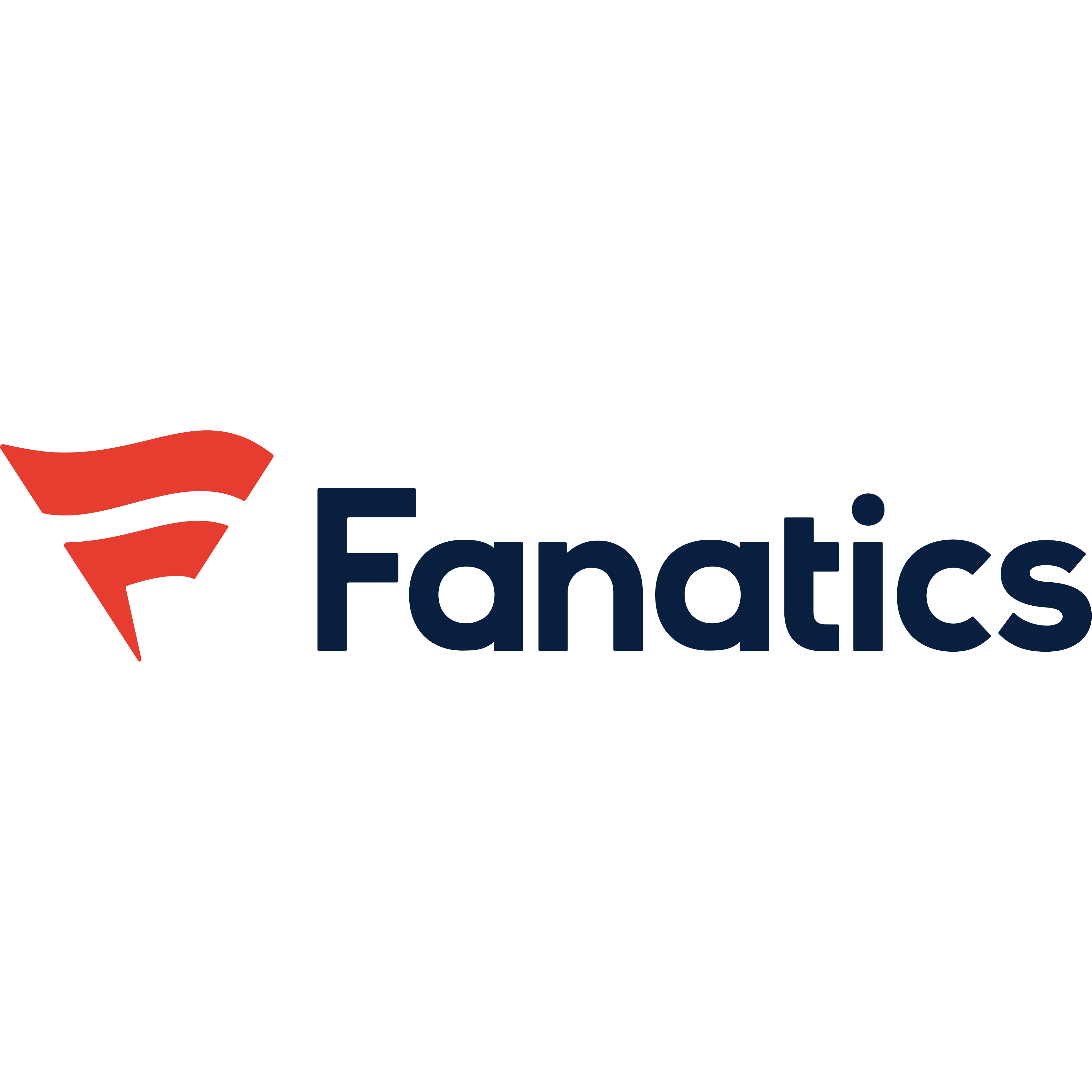graphile-migrate
Opinionated SQL-powered productive roll-forward migration tool for PostgreSQL.
Crowd-funded open-source software
To help us develop this software sustainably under the MIT license, we ask all individuals and businesses that use it to help support its ongoing maintenance and development via sponsorship.
Click here to find out more about sponsors and sponsorship.
And please give some love to our featured sponsors
 Surge * |
 Netflix * |
 Qwick * |
 The Guild * |
 Chad Furman * |
 Fanatics * |
 Dovetail * |
 Enzuzo * |
 Stellate * |
* Sponsors the entire Graphile suite
Why?
- fast iteration speed — save a file and database is updated in milliseconds
- roll-forward only — maintaining rollbacks is a chore, and in 10 years of API development I've never ran one in production
- familiar — no custom DSL to learn, just use PostgreSQL syntax
- fully functional — sending SQL commands directly to PostgreSQL means you can use all of PostgreSQL's features
- complements PostGraphile — works with any application, but PostGraphile's watch mode means that the GraphQL schema is instantly regenerated (without server restart) whenever the database changes
Opinions
- Local iteration should be easy and fast
- Migrating should be fast
- Once deployed, databases should be identical (including subtleties such as column order)
- Migration software should not be tied to a particular application stack
- Migrations should be written in SQL
- Roll-forward only (production issues should be fixed via additional migrations, development can iterate current migration)
- Once a migration is signed off (deployable) it should never be edited
- Use PostgreSQL ;)
- Development databases are cheap; can run multiple
- Resetting development database is acceptable if absolutely necessary
- Production databases are critical - NEVER RESET
- Migrating data (as well as DDL) is acceptable, but should be kept to fast operations (or trigger a background job)
- Migrations should automatically be wrapped in transactions by default
- Migrations that require execution outside of a transaction (e.g. to enable
augmenting non-DDL-safe things, such as
ENUMs in PostgreSQL) should be explicitly marked - Migrations should not pollute PostgreSQL global settings (e.g. use
SET LOCALrather thanSET) - Roles should be managed outside of migrations (since they can be shared between databases)
- Certain schemas are managed by other tools and should not be interfered with;
e.g.
graphile_worker
Setup
In development, graphile-migrate uses two databases: the main database and a
"shadow" database. The "shadow" database is used internally by
graphile-migrate to test the consistency of the migrations and perform various
other tasks.
In production, most users only run graphile-migrate migrate which operates
solely on the main database - there is no need for a shadow database in
production.
All members of your team should run the same PostgreSQL version to ensure that the shadow dump matches for everyone (one way of achieving this is through Docker, but that isn't required).
We recommend dumping your database schema with pg_dump after migrations are
completed; you can
see an example of this in Graphile Starter.
Tracking this file in git will allow you to easily see the changes that
different migrations are making, so you can be sure you're making the changes
you intend to. We recommend that you dump the shadow database as it will be
unaffected by the iteration you've been applying to your development database
(which may have come out of sync - see 'Drift' below).
Getting started
These instructions are for starting a new database project with Graphile Migrate; if you already have a database schema, see Using Migrate with an existing database for some tips.
Create your database role (if desired), database and shadow database:
createuser --pwprompt appuser
createdb myapp --owner=appuser
createdb myapp_shadow --owner=appuserExport your database URL, shadow database URL, and a "root" database URL which
should be a superuser account connection to any other database (most
PostgreSQL servers have a default database called postgres which is a good
choice for this).
export DATABASE_URL="postgres://appuser:password@localhost/myapp"
export SHADOW_DATABASE_URL="postgres://appuser:password@localhost/myapp_shadow"
export ROOT_DATABASE_URL="postgres://postgres:postgres@localhost/postgres"Your database URL is needed for most Graphile Migrate commands. The shadow database URL is needed for the development-only commands
commit,uncommitandreset. The root database URL is needed to drop and recreate databases, i.e. for theresetcommand and for commands that call it (commitanduncommit, which reset the shadow database).NOTE: you should not need the shadow database URL or root database URL in production (you only need the
graphile-migrate migratecommand in production) unless you have actions that need them.
Then run:
graphile-migrate initAt this point you should be ready to use Graphile Migrate. You may want to store
these environmental variables to a file so you can easily source them (with the
. command in bash, for example) in future:
. ./.env
graphile-migrate watchUsage
Committed and current migrations
New migrations are composed within "the current migration". You will see
this term used a lot. By default this is in the migrations/current.sql file,
but if you like you may delete that file and instead create a
migrations/current/ folder into which you may place numbered SQL files which
together comprise "the current migration".
The current migration should be idempotent (this is your responsibility, see
"Idempotency" below); i.e. it should be able to be ran multiple times and have
the same result. This is critical for graphile-migrate watch, which is one of
the main selling points of the project.
graphile-migrate
graphile-migrate <command>
Commands:
graphile-migrate init Initializes a graphile-migrate project by
creating a `.gmrc` file and `migrations`
folder.
graphile-migrate migrate Runs any un-executed committed migrations.
Does NOT run the current migration. For use
in production and development.
graphile-migrate watch Runs any un-executed committed migrations and
then runs and watches the current migration,
re-running it on any change. For development.
graphile-migrate commit Commits the current migration into the
`committed/` folder, resetting the current
migration. Resets the shadow database.
graphile-migrate uncommit This command is useful in development if you
need to modify your latest commit before you
push/merge it, or if other DB commits have
been made by other developers and you need to
'rebase' your migration onto theirs. Moves
the latest commit out of the committed
migrations folder and back to the current
migration (assuming the current migration is
empty-ish). Removes the migration tracking
entry from ONLY the local database. Do not
use after other databases have executed this
committed migration otherwise they will fall
out of sync. Assuming nothing else has
changed, `graphile-migrate uncommit &&
graphile-migrate commit` should result in the
exact same hash. Development only, and liable
to cause conflicts with other developers - be
careful.
graphile-migrate status Exits with a bitmap status code indicating
statuses:
- 1 if there are committed migrations that
have not been executed yet (requires DB
connection)
- 2 if the current migration is non-empty
(ignoring comments)
If both of the above are true then the output
status will be 3 (1+2). If neither
are true, exit status will be 0 (success).
Additional messages may also be output.
graphile-migrate reset Drops and re-creates the database, re-running
all committed migrations from the start.
**HIGHLY DESTRUCTIVE**.
graphile-migrate compile [file] Compiles a SQL file, inserting all the
placeholders and returning the result to
STDOUT
graphile-migrate run [file] Compiles a SQL file, inserting all the
placeholders, and then runs it against the
database. Useful for seeding. If called from
an action will automatically run against the
same database (via GM_DBURL envvar) unless
--shadow or --rootDatabase are supplied.
graphile-migrate completion Generate shell completion script.
Options:
--help Show help [boolean]
--config, -c Optional path to gmrc file [string] [default: .gmrc[.js|.cjs]]
You are running graphile-migrate v1.4.1.
graphile-migrate init
graphile-migrate init
Initializes a graphile-migrate project by creating a `.gmrc` file and
`migrations` folder.
Options:
--help Show help [boolean]
--config, -c Optional path to gmrc file [string] [default: .gmrc[.js|.cjs]]
--folder Use a folder rather than a file for the current migration.
[boolean] [default: false]
graphile-migrate migrate
graphile-migrate migrate
Runs any un-executed committed migrations. Does NOT run the current migration.
For use in production and development.
Options:
--help Show help [boolean]
--config, -c Optional path to gmrc file [string] [default: .gmrc[.js|.cjs]]
--shadow Apply migrations to the shadow DB (for development).
[boolean] [default: false]
--forceActions Run beforeAllMigrations and afterAllMigrations actions even if
no migration was necessary. [boolean] [default: false]
graphile-migrate watch
graphile-migrate watch
Runs any un-executed committed migrations and then runs and watches the current
migration, re-running it on any change. For development.
Options:
--help Show help [boolean]
--config, -c Optional path to gmrc file [string] [default: .gmrc[.js|.cjs]]
--once Runs the current migration and then exits.
[boolean] [default: false]
--shadow Applies changes to shadow DB. [boolean] [default: false]
graphile-migrate commit
graphile-migrate commit
Commits the current migration into the `committed/` folder, resetting the
current migration. Resets the shadow database.
Options:
--help Show help [boolean]
--config, -c Optional path to gmrc file [string] [default: .gmrc[.js|.cjs]]
--message, -m Optional commit message to label migration, must not contain
newlines. [string]
graphile-migrate uncommit
graphile-migrate uncommit
This command is useful in development if you need to modify your latest commit
before you push/merge it, or if other DB commits have been made by other
developers and you need to 'rebase' your migration onto theirs. Moves the latest
commit out of the committed migrations folder and back to the current migration
(assuming the current migration is empty-ish). Removes the migration tracking
entry from ONLY the local database. Do not use after other databases have
executed this committed migration otherwise they will fall out of sync. Assuming
nothing else has changed, `graphile-migrate uncommit && graphile-migrate commit`
should result in the exact same hash. Development only, and liable to cause
conflicts with other developers - be careful.
Options:
--help Show help [boolean]
--config, -c Optional path to gmrc file [string] [default: .gmrc[.js|.cjs]]
graphile-migrate reset
graphile-migrate reset
Drops and re-creates the database, re-running all committed migrations from the
start. **HIGHLY DESTRUCTIVE**.
Options:
--help Show help [boolean]
--config, -c Optional path to gmrc file [string] [default: .gmrc[.js|.cjs]]
--shadow Applies migrations to shadow DB. [boolean] [default: false]
--erase This is your double opt-in to make it clear this DELETES
EVERYTHING. [boolean] [default: false]
graphile-migrate status
graphile-migrate status
Exits with a bitmap status code indicating statuses:
- 1 if there are committed migrations that have not been executed yet (requires
DB connection)
- 2 if the current migration is non-empty (ignoring comments)
If both of the above are true then the output status will be 3 (1+2). If neither
are true, exit status will be 0 (success). Additional messages may also be
output.
Options:
--help Show help [boolean]
--config, -c Optional path to gmrc file [string] [default: .gmrc[.js|.cjs]]
--skipDatabase Skip checks that require a database connection.
[boolean] [default: false]
graphile-migrate compile
graphile-migrate compile [file]
Compiles a SQL file, inserting all the placeholders and returning the result to
STDOUT
Options:
--help Show help [boolean]
--config, -c Optional path to gmrc file [string] [default: .gmrc[.js|.cjs]]
--shadow Apply shadow DB placeholders (for development).
[boolean] [default: false]
graphile-migrate run
graphile-migrate run [file]
Compiles a SQL file, inserting all the placeholders, and then runs it against
the database. Useful for seeding. If called from an action will automatically
run against the same database (via GM_DBURL envvar) unless --shadow or
--rootDatabase are supplied.
Options:
--help Show help [boolean]
--config, -c Optional path to gmrc file [string] [default: .gmrc[.js|.cjs]]
--shadow Apply to the shadow database (for development).
[boolean] [default: false]
--root Run the file using the root user (but application database).
[boolean] [default: false]
--rootDatabase Like --root, but also runs against the root database rather
than application database. [boolean] [default: false]
Configuration
Configuration can be stored in a .gmrc JSON5 file (compatible with JSON and
JSONC),
or in a .gmrc.js file which will be require()'d. The following configuration
options are available:
-
connectionString(orDATABASE_URLenvvar) — this is your main development database. If you rungraphile-migrate resetthis will be dropped without warning, so be careful. -
shadowConnectionString(orSHADOW_DATABASE_URLenvvar) — the shadow database which will be dropped frequently, so don't store anything to it that you care about. -
rootConnectionString(orROOT_DATABASE_URLenvvar) — this is used to connect to the database server with superuser (or superuser-like) privileges to drop and re-create the relevant databases (via theresetcommand directly, or via thecommitcommand for the shadow database). It must not be a connection to the database inconnectionStringorshadowConnectionString. It defaults to "template1" if the key or environment variable is not set so it may result in PG connection errors if a default PGtemplate1database is not available. -
pgSettings— optional string-string key-value object defining settings to set in PostgreSQL when migrating. Useful for settingsearch_pathfor example. Beware of changing this, a full reset will use the new values which may lead to unexpected consequences. -
placeholders— optional string-string key-value object defining placeholder values to be replaced when encountered in any migration files. Placeholders must begin with a colon and a capital letter, and then can continue with a string of capital letters, numbers and underscores/^:[A-Z][A-Z0-9_]+$/.:DATABASE_NAMEand:DATABASE_OWNERare automatically added to this object. The value must be a valid in the place you use it (i.e. ensure you escape the values) — graphile-migrate does not perform any escaping for you. The special value!ENVwill tell graphile-migrate to load the setting from the environment variable with the same name. -
beforeReset— optional list of actions to execute before deleting and recreating the database. -
afterReset— optional list of actions to execute after the database has been created but before the migrations run, useful to set default permissions, install extensions or install external schemas likegraphile-workerthat your migrations may depend on. See "Actions" below. -
beforeAllMigrations— optional list of actions to execute before any pending migrations are executed. -
afterAllMigrations— optional list of actions to execute after all the migrations have ran, useful for performing a tasks like dumping the database or regenerating dependent data (GraphQL schema, type definitions, etc). See "Actions" below. -
beforeCurrent— optional list of actions to execute beforecurrent.sqlis executed. -
afterCurrent— optional list of actions to execute aftercurrent.sqlis loaded into the database. See "Actions" below. -
manageGraphileMigrateSchema(defaults totrue) — if set tofalse, you assume responsibility for managing thegraphile_migrateschema. Not recommended. This is useful in environments where the user running the migrations isn't granted schema creation privileges. If you set this tofalse, you must be sure to migrate thegraphile_migratedatabase schema any time you update thegraphile-migratemodule. -
blankMigrationContent─ what should be written to the current migration after commit. NOTE: this should only contain comments such that the current commit is "empty-ish" on creation. -
migrationsFolder─ allows you to override where migrations are stored; defaults to./migrations.
What follows is an example configuration file that depends on the following environmental variables being set:
-
ROOT_DATABASE_URL- equivalent torootConnectionStringabove, e.g.postgres://localhost/template1 -
DATABASE_URL- equivalent toconnectionStringabove, e.g.postgres://my_user:my_password@localhost/my_db -
SHADOW_DATABASE_URL- equivalent toshadowConnectionStringabove, e.g.postgres://my_user:my_password@localhost/my_db_shadow(should use same credentials as the )
{
"pgSettings": {
"search_path": "app_public,app_private,app_hidden,public"
},
"placeholders": {
":DATABASE_AUTHENTICATOR": "!ENV",
":DATABASE_VISITOR": "!ENV"
},
"afterReset": [
"afterReset.sql",
{ "_": "command", "command": "npx --no-install graphile-worker --once" }
],
"afterAllMigrations": [
{
"_": "command",
"command": "pg_dump --schema-only --no-owner --exclude-schema=graphile_migrate --file=data/schema.sql \"$GM_DBURL\""
}
],
"afterCurrent": ["afterCurrent.sql"]
}A .gmrc.js configuration file could be identical to the above, except the
opening brace { would be prepended with module.exports =:
module.exports = {All commands accept an optional --config parameter with a custom path to a
.gmrc(.js) file. This is useful if, for example, you have a monorepo or other
project with multiple interacting databases.
Windows
Since committed migrations utilize hashes to verify file integrity, the
difference between LF and CRLF line endings on *nix and Windows will cause the
hash verification to fail. Git's default/recommended approach to line endings is
to convert back and forth depending on your platform. To work around this, we
recommend adding a .gitattributes file to force LF line endings for the
committed migrations on all platforms:
migrations/committed/*.sql text eol=lf
migrations/current.sql text eol=lf
After committing this change, you may run git checkout-index --force --all to
rewrite the working copy with LF line endings. If that command does not replace
the CRLF line endings, you may need to delete your copy of the repo and
re-clone.
Actions
We support certain "actions" after certain events happen; for example see
afterReset, afterAllMigrations and afterCurrent mentioned above. Actions
should be specified as a list of strings or action spec objects.
Actions spec strings
String values are converted to sql action specs (see below) with the file
property set to the string. I.e. they indicate a file within the migrations
folder to execute against the database.
Action spec objects
Action spec objects are plain JSON objects with the following properties:
-
_- specifies the type of object (see supported types below) -
shadow(optional) - if set, must be a boolean;trueindicates the action should only occur against the shadow DB,falseindicates that the action should not occur against the shadow DB, unset runs against both databases
Each action spec subtype can have its own properties.
sql action spec
e.g.
{
"_": "sql",
"file": "install_extensions.sql",
"root": false
}The file indicates the name of a SQL file in the migrations/ folder to
execute against the database (e.g. to set permissions, load data, install
extensions, etc).
The root property should be used with care, and is only supported by the
afterReset hook (all other hooks will throw an error when it is set). When
true, the file will be run using the superuser role (i.e. the one defined in
rootConnectionString) but with the database name from connectionString. This
is primarily useful for creating extensions.
An identical effect can be achieved using the shorthand syntax of prepending the file name with an exclamation point, like so:
"afterReset": [ "!install_extensions.sql" ]
command action spec
e.g.
{
"_": "command",
"command": "npx --no-install graphile-worker --once"
}command actions specify shell actions (e.g. running an external command such
as graphile-worker which might install a separately managed worker schema into
the database, or running something like pg_dump to dump the schema).
When the command is invoked it will have access to the following envvars:
-
GM_DBURL- the relevant database URL (e.g. the one that was just reset/migrated) -
GM_DBNAME- the database name inGM_DBURL -
GM_DBUSER- the database user inGM_DBURLifrootisfalse. -
GM_SHADOW- set to1if we're dealing with the shadow DB, unset otherwise
IMPORTANT NOTE the DATABASE_URL envvar will be set to the nonsense value
postgres://PLEASE:USE@GM_DBURL/INSTEAD to avoid ambiguity - you almost
certainly mean to use GM_DBURL in your scripts since they will want to change
whichever database was just reset/migrated/etc (which could be the shadow DB).
The root property applies to command actions with the similar effects as
sql actions (see above). When true, the command will be run with GM_DBURL
envvar set using the superuser role (i.e. the one defined in
rootConnectionString) but with the database name from connectionString. When
root is true, GM_DBUSER is not set.
Collaboration
The intention is that developers can work on different migrations in parallel,
and can switch between git branches - idempotent migrations using CASCADE
when dropping should make it possible to do this with little issue (other than
the implicit data loss of dropping tables/columns/etc).
graphile-migrate commit, on the other hand, should be linear - one way to
approach this is to only commit a migration immediately before it is merged to
master. Another approach is to do the commit on master itself. Non-linear
migration commits will result in errors, and may lead to you resetting your
development database.
Idempotency
graphile-migrate is all about iteration; you write your database modification
commands in migrations/current.sql and every time you save it is ran against
the database, generally taking under 100ms.
Because we run the same script over and over (on every save) and there's no down migrations, you need to make your script idempotent. PostgreSQL has a number of idempotent commands such as:
create or replace function...
drop table if exists ...
drop trigger if exists ...
-- etcWhen these aren't suitable you can start your migration with an explicit rollback: commands that undo later actions. For example:
-- undo
drop table if exists people;
-- redo
create table people (
id serial primary key,
name text
);When it comes time to commit your migration we will run it against a "shadow" database to make sure it's valid.
It's often wise to use DROP ... CASCADE so that if other migrations are worked
on in parallel no additional rollback step is required. When you
DROP ... CASCADE, be sure to add back any dropped dependents (triggers,
indexes, etc) once the dropped entity has been replaced. Reviewing the database
schema diff can help you spot these issues.
More examples of idempotent operations can be found in docs/idempotent-examples.md.
Disable Transaction
Some migrations require execution outside of a transaction (e.g. to enable
augmenting non-DDL-safe things, such as ENUMs in PostgreSQL). To disable
wrapping a given migration file in a transaction, use the special comment
--! no-transaction at the top of the migration file, e.g.
--! no-transaction
ALTER TYPE user_role ADD VALUE IF NOT EXISTS 'Admin';IMPORTANT: pg always runs multi-statement queries in a pseudo-transaction,
so --! no-transaction migrations must contain exactly one statement. You might
be able to work around this with a DO $$ block? (If this works, please send a
PR to this paragraph.)
Editing a committed migration
Graphile Migrate deliberately performs cryptographic hashing to avoid/detect accidental editing of committed migrations and to ensure there is a strict linear progression in migrations. By default, Graphile Migrate will refuse to run a migration if its hash does not match what it declares; this is generally desired (and you shouldn't have to worry about it).
Should you need to go back and edit a committed migration you can opt out of
Graphile Migrate's consistency checks by adding the comment
--! AllowInvalidHash to the very top of the committed migration. Please note
that editing the migration WILL NOT cause the migration to run again on
yours or any other system.
The need to edit a previous migration generally arises if there was a mistake in your migration that prevents it running on production but you don't want to reset your staging database, or where an update to PostgreSQL has made the syntax or commands in an older migration invalid and thus you must edit them to make the migration run against a clean database again. Most users should never need this functionality. If you find yourself using it more than once or twice, please get in touch and we can discuss how the tool can better serve your needs.
Terminology
The current migration
The file (or files) in which the non-committed migration that would be executed
by graphile-migrate watch is defined. By default this is in the
migrations/current.sql file, but it might be migrations/current/*.sql if
you're using folder mode.
Committed migration(s)
The files for migrations that you've committed with graphile-migrate commit
(note: this is different to committing the files using your version control
system, e.g. git). By default they're located in migrations/committed/*.sql
and are numbered.
Root
We use the term "root" to indicate a database role with superuser or superuser-like privileges. This should include the ability to create and delete databases, but may also include the abilities to create extensions and/or roles.
Since "superuser" has a specific meaning and is not strictly required for these activities we avoid that term, however you may find that you use a superuser as your root user - this is expected.
Status
STABLE
This project is intended to be consumed via the CLI, which is stable and is being used in production in many projects. The CLI doesn't have explicit tests (PR welcome!), but it's a thin wrapper around the programmatic API which has copious tests.
The programmatic API is deliberately undocumented; it is not a public interface at this time (though it is fully typed in TypeScript). We reserve the right to make breaking changes to the programmatic API in patch releases (though this has not happened yet and is unlikely to happen without good reason). Should you need to use the programmatic API, please get in touch to encourage us to make this a supported interface ─ we'd love to know how you're using it! src/cli.ts is the best place to start.
The project as a whole is stable, but the approach is still "experimental", in particular:
- the approach of up-only and re-runnable migrations is not for the faint of heart ─ it requires solid SQL knowledge and if insufficient attention is paid it could result in your migrations and your local database state drifting apart (see 'Drift' below).
If you don't understand what makes Graphile Migrate awesome, you may want to consider an alternative migration framework such as these awesome (and quite diverse) projects:
Node.js versioning policy
We only support LTS versions of Node.js; the currently supported versions are:
- Node v14.x
- Node v16.x
- Node v18.x
Other versions of Node may work, but are not officially supported.
Once a Node.js version becomes "unsupported" (i.e. the maintenance LTS window ends), this project will no longer support it either. We may drop support for unmaintained versions of Node.js in a minor release.
Drift
NOTE: drift only affects your local development database, it cannot occur in your production database assuming you're only using
graphile-migrate migratein production.
In development, if you're insufficiently careful with modifications to
current.sql (including when you choose to save the file, and when switching
branches in git) you may end up with a local database state that differs from
what you'd expect given the committed migrations and contents of current.sql.
We strongly recommend against auto-save for this reason; and recommend that
you keep a dumped schema.sql to help you spot unexpected changes.
Here's an illustrative example to explain the drift phenomenon, with function
inspired by XKCD221. Imagine that you're running
graphile-migrate watch locally and you write the following to current.sql:
-- Revision 1
create function rnd() returns int as $$
select 4;
$$ language sql stable;Because watch runs the contents of current.sql whenever it changes, this
will create the rnd() function in your local database.
A couple seconds later you change your mind, and decide to rename the function,
writing the following to current.sql:
-- Revision 2
create function get_random_number() returns int as $$
select 4;
$$ language sql stable;This creates get_random_number(), but no-one ever said to delete rnd(), so
now both functions exist. According to the committed migrations and
current.sql only get_random_number() should exist. The existence of the
orphaned rnd() function in your local database is what we term "drift" ─ this
function will never appear in your production database even after you commit
this latest migration; it also won't be in your shadow database (because we
reset the shadow database and reapply all the migrations frequently).
Since Graphile Migrate doesn't know how to reverse the SQL you've written, it's
up to you to make the SQL safe so that it can be ran over and over, and adjust
to your changes. The two to current.sql versions above should have been
-- Revision 1
drop function if exists rnd();
create function rnd() returns int as $$
select 4;
$$ language sql stable;and
-- Revision 2
drop function if exists rnd();
drop function if exists get_random_number();
create function get_random_number() returns int as $$
select 4;
$$ language sql stable;Using Migrate with an existing database
You can use Graphile Migrate to manage the migrations for your existing system, but the process is slightly different.
Because Graphile Migrate tracks which migrations it has ran and runs remaining migrations, you must not put your existing database schema as the first migration otherwise you production database might be wiped (or it just won't work) when Graphile Migrate attempts to apply it. Instead you must ensure all databases (development, staging, production, etc.) are at the same state before running any migrations, and then the Graphile Migrate migrations will be applied on top of this initial state.
Storing the initial state
Though you could hand-roll the initial state if you prefer, we generally advise
that you take a schema-only dump of your existing (production) database schema
and store it to migrations/initial_schema.sql with a command such as:
pg_dump --schema-only --no-owner --file=migrations/initial_schema.sql "postgres://..."
If you manage some of the data in your initial database schema using your
existing migration system then you should add that data to your
initial_schema.sql file too.
New databases must apply the initial state
When creating new databases (e.g. test databases, new development databases for
new developers, when resetting your development database, whenever Graphile
Migrate recreates the shadow database, etc.) it's imperative that these new
databases also have initial_schema.sql applied to them.
Applying the initial schema with Actions
One way to apply the initial schema is to use Actions, specifically
the afterReset action, to apply the initial schema immediately after the
database is reset/created and before any committed migrations are applied. Add
something like "afterReset": [ "initial_schema.sql" ] to your .gmrc and
whenever Graphile Migrate's reset command runs (including against the shadow
database when committing a migration) this initial schema will be applied. Note
this is only used when a DB is reset (i.e. when you have Graphile Migrate create
it) and thus it won't be a concern for production since you never run reset
there.
Applying the initial schema in other ways
You can take care of applying the initial schema using your own tooling should you want or need to do so.
The official PostgreSQL Docker container
has the /docker-entrypoint-initdb.d/ directory for initialization scripts, and
this might be a good location for your initial_schema.sql file if you're using
this image.
Important note: in development the shadow database must be able to be
destroyed and recreated by Graphile Migrate at will, so applying the initial
schema to the shadow database must be done via an Action (see above). You can,
however, ensure that your action only applies to the shadow database by setting
the "shadow": true property, leaving you free to manage how your more
permanent databases are initialized.
Examples
- Running Graphile Migrate in a Docker container
- Examples of idempotent migration files including edge cases
TODO:
-
[ ] Store pgSettings with committed transactions to protect against user edits
-
[ ] Add
graphile-migrate checkcommand: reset the shadow database to the latest dump, apply the current migration to the shadow database, and output a SQL schema diff you can use to ensure no accidental changes have been made -
[ ] Add
graphile-migrate importcommand: used after init but before running any other commands, imports the existing database as if it were the first migration. (For now, see Using Migrate with an existing database.)




